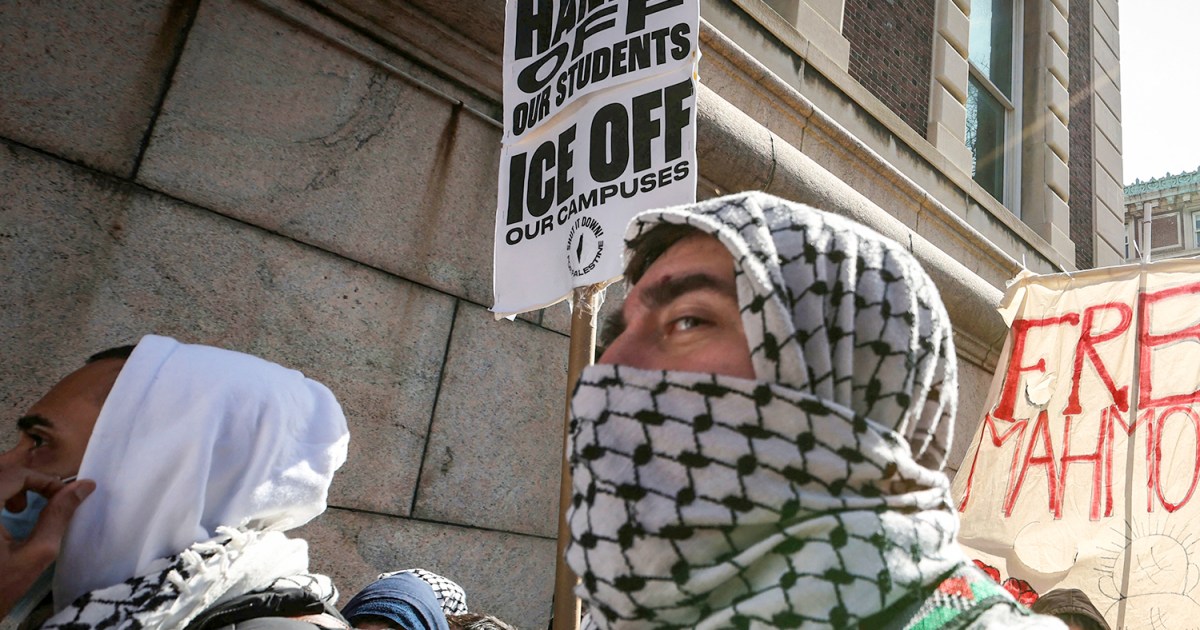Civil liberties have come under threat since United States President Donald Trump took power in January. The Trump administration has primarily targeted more vulnerable groups, such as immigrants, tourists and non-American activists, as US law does not grant them the same protections as US citizens.
Some immigrants and tourists have found themselves trapped at the border for long periods of time. In some cases, they have been held due to social media posts critical of Trump. That has raised the question – what should a person be prepared for when they’re going to encounter US immigration agents?
Points of entry
Crossing the US border is a point of particular vulnerability for targets of Trump’s crackdown.
US Customs and Border Protection (CBP) detained Lebanese physician and assistant professor at Brown University Rasha Alawieh, as she attempted to re-enter the United States in March, and eventually deported her after agents allegedly discovered images related to Hezbollah on her phone. The agency provided no evidence that she had any connection to the paramilitary group, and she tried to explain that she did not support them before she was eventually sent to Lebanon.
Tom Bowman, policy counsel at the Center for Democracy and Technology (CDT), says crossing the US border raises “distinct privacy concerns,” because Customs and Border Protection has more authority to search people than regular law enforcement. They are allowed to search people’s electronic devices “without a warrant or probable cause,” he says.
“If you are a citizen, they cannot deny you entry into the country on the basis of refusing to unlock your phone. They may confiscate the phone, but they can’t deny you entry,” says Bill Budington, a senior staff technologist at the Electronic Frontier Foundation (EFF). “If you are at risk of deportation, then it might be advisable to comply with any requests by customers and border enforcement, but that doesn’t mean you can’t minimise the amount of data you’re carrying with you.”
“Some travellers choose to limit what data they carry across the border,” says Bowman. “That may involve using a travel-only device, storing essential information in the cloud and logging out of all accounts, or removing sensitive apps and files entirely. Others opt to shut down devices completely before arriving at the border, relying on full-disk encryption to protect their contents.”
The ICE has been targeting student protesters who support Palestine, and it often surveils social media to do so.
Badar Khan Suri, a postdoctoral fellow at Georgetown University, was seized by Immigration and Customs Enforcement (ICE) in March as he returned to his home following a Ramadan iftar. ICE alleged Suri, who was born in India and was in the US on a student visa, was “spreading Hamas propaganda and promoting antisemitism on social media”, which his lawyers have denied.
Two days earlier, US Citizenship and Immigration Services had announced that it would screen the social media accounts of people applying for permanent residence and non-citizens affiliated with educational institutions for evidence of “antisemitic activity”.
Punishing protest
While the Trump administration has not yet invoked the Insurrection Act, it is punishing people for protesting – non-citizens, for now.
The administration has notably been trying to deport a student activist at Columbia University named Mahmoud Khalil because of his involvement in pro-Palestinian protests, and his is just one of several similar cases.
“I think people should be very concerned,” says Daniel Solove, a professor of intellectual property and technology law at George Washington University. “We’re living in a surveillance society, and the government can use facial recognition technologies and AI-assisted surveillance technologies to systematically identify and track protesters. We’re already seeing the government go after protesters.”
Cornell University student and activist Momodou Taal had his student visa revoked and recently decided to leave the US to avoid deportation. Yunseo Chung, a Columbia student and activist and a legal permanent resident who moved to the US from South Korea at age 7, has also been targeted by ICE.
Federal agents might use video surveillance, social media monitoring, facial recognition or geolocation data to identify who is participating in protests, Bowman says. He says people documenting protests with photos and videos can also unintentionally identify who participated in a particular demonstration, so people should be careful about how they’re using their devices.
“One basic protection is to turn your phone on airplane mode when you’re going to a protest. That will ensure that you’re not sending your data in real time,” says Budington. “You can still navigate streets with offline maps. Both Google Maps and Apple Maps have a way to do that.”
Protesters can also use messaging apps like Signal to communicate during protests, because then their messages can be encrypted. Some might recommend just leaving your phone at home, but you might want to have it in case of an emergency or if you want to document wrongful police actions.
It is essentially impossible to avoid all government snooping and keep one’s data completely secure 100 percent of the time, but there are actions people crossing the border or attending protests can take that will help reduce the risk of them being targeted by the government.
Americans are becoming more aware of their need for privacy, and they’re looking for ways to protect themselves. Buddington says people seem to be a lot more concerned about privacy than they were five or 10 years ago.
“The government already has massive troves of personal data and is using it improperly. The government already has countless surveillance technologies and is using them,” Solove says. “We’re already in a Constitutional crisis. It seems that this administration will push as far as they can until they are stopped.”
